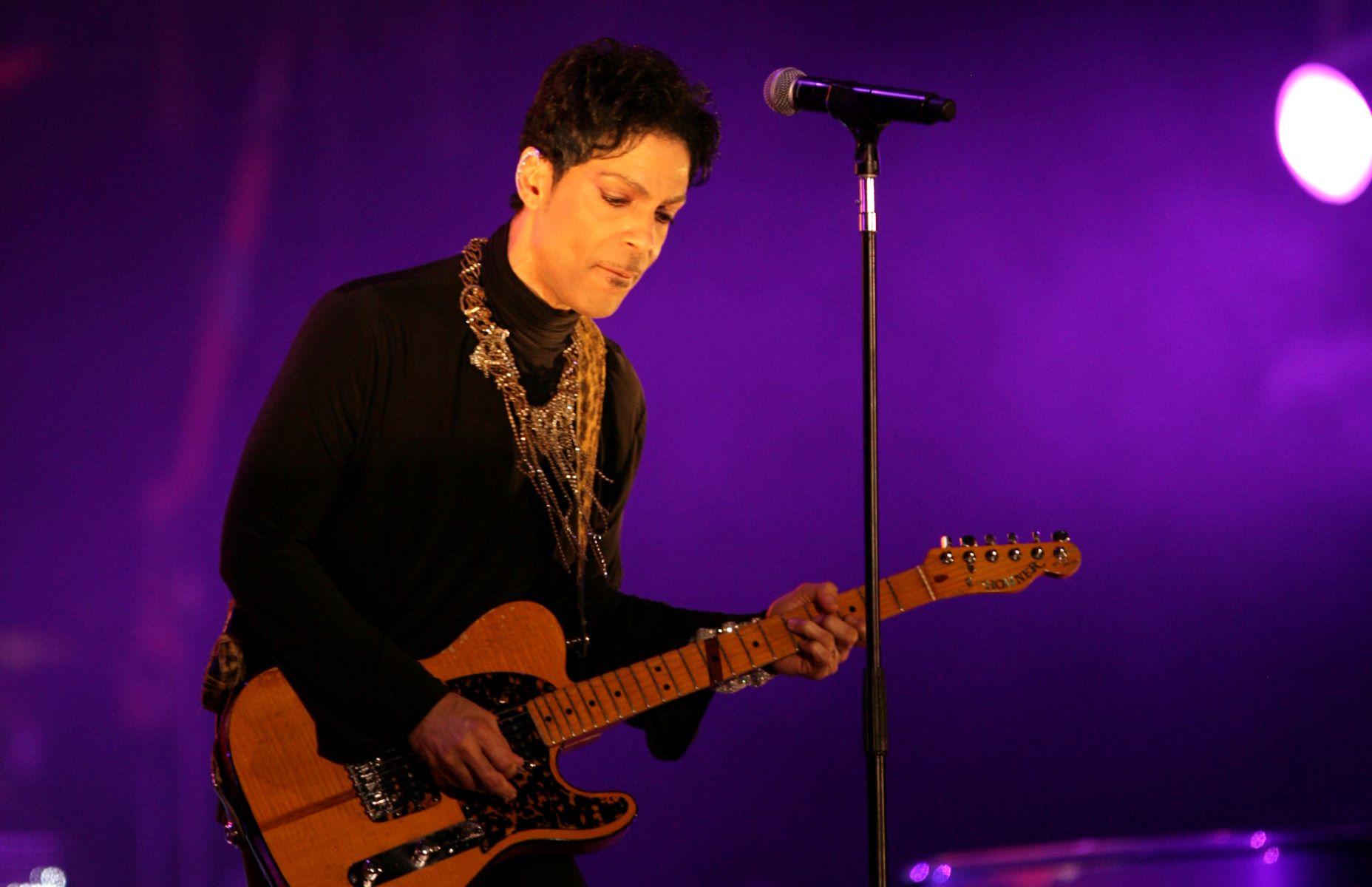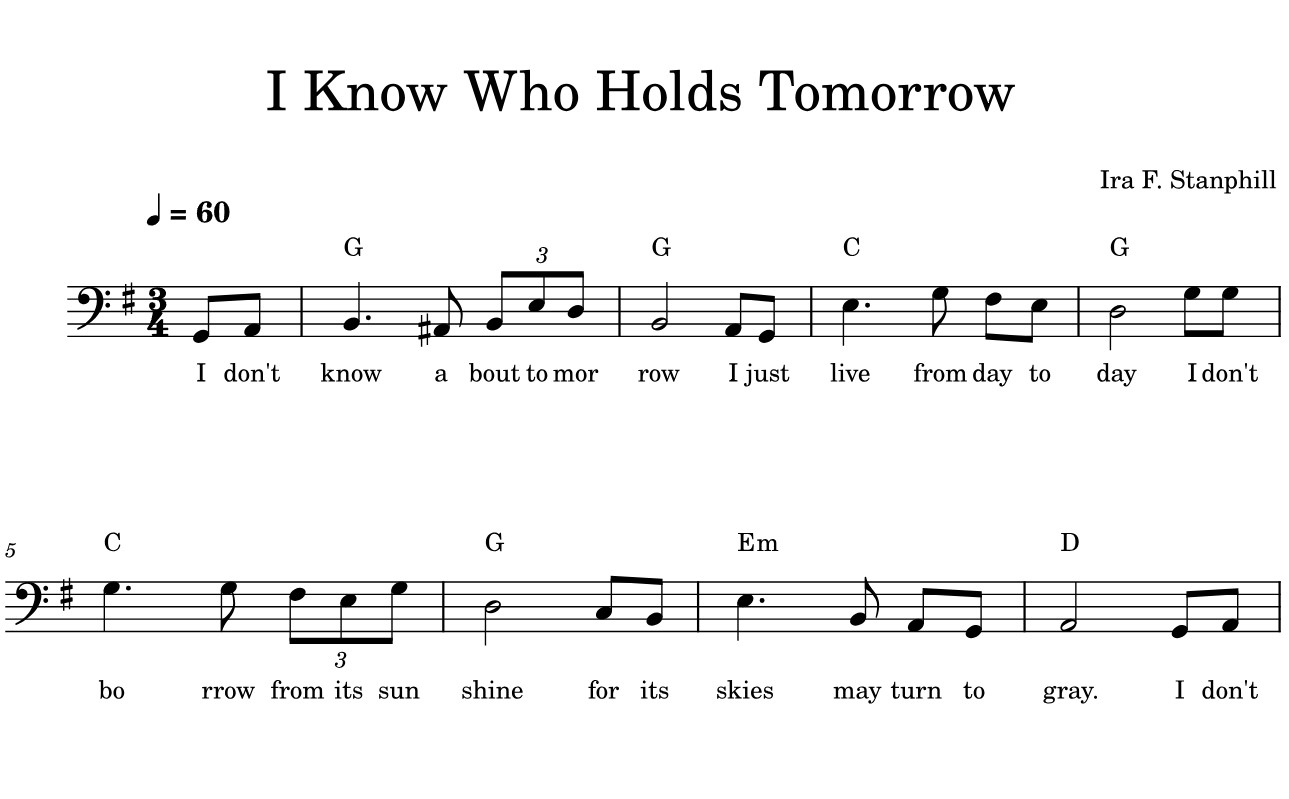Home>Production & Technology>Music Theory>Great Musicians Who Know Music Theory


Music Theory
Great Musicians Who Know Music Theory
Published: January 29, 2024
Discover a talented group of musicians who possess a deep understanding of music theory. Join them on a musical journey that explores the intricacies and beauty of this essential element in creating great music.
(Many of the links in this article redirect to a specific reviewed product. Your purchase of these products through affiliate links helps to generate commission for AudioLover.com, at no extra cost. Learn more)
Table of Contents
Introduction
Music theory is the foundation upon which all musical knowledge is built. It is the language that allows musicians to communicate and understand the inner workings of music. While many musicians can play an instrument or sing with great skill, those who have a deep understanding of music theory have a distinct advantage.
Music theory provides musicians with the tools to analyze and interpret music, enabling them to make informed decisions and express themselves creatively. It encompasses elements such as harmony, melody, rhythm, and form, and provides a framework for understanding how these elements work together.
By studying music theory, musicians can broaden their musical horizons, gain a deeper appreciation for different genres and styles, and unlock new creative possibilities. It allows them to explore complex harmonic progressions, create intricate melodies, and experiment with unconventional rhythms. In essence, music theory empowers musicians to push the boundaries of their art.
In this article, we will explore the significance of music theory for musicians and delve into the lives of some of the great musicians who have mastered it. From classical composers to jazz legends, these individuals have not only demonstrated exceptional talent in their respective genres, but have also showcased a profound understanding of music theory, which has shaped their artistic vision and contributed to their enduring legacies.
The Importance of Music Theory for Musicians
Music theory plays a crucial role in shaping the development and growth of musicians. It provides a solid foundation for understanding the mechanics of music, allowing musicians to communicate effectively and interpret musical compositions accurately. Here are some key reasons why music theory is vital for musicians:
- Compositional Skills: Music theory equips musicians with the knowledge and skills needed to compose original music. By understanding the principles of harmony, melody, and rhythm, musicians can create intricate and compelling compositions that convey their artistic vision.
- Improvisation: For musicians who enjoy improvisation, music theory is invaluable. It provides a roadmap for navigating different tonalities, chord progressions, and scales, enabling musicians to create improvised solos that are musically coherent and expressive.
- Musical Analysis: With a solid understanding of music theory, musicians can analyze and dissect musical compositions. They can identify underlying patterns, chord progressions, and structural elements, which helps deepen their appreciation and understanding of music.
- Collaboration: Music theory serves as a common language for musicians, allowing them to communicate ideas and collaborate effectively. Whether performing in an ensemble or working on a studio recording, a shared understanding of music theory fosters better musical cohesion and allows for more nuanced musical expressions.
- Educational Opportunities: Music theory provides a pathway to formal music education. Whether pursuing a music degree or attending workshops and masterclasses, a solid foundation in music theory is often a prerequisite for further music studies and professional opportunities.
Ultimately, music theory empowers musicians to elevate their musical abilities and broaden their artistic horizons. It gives them the tools to analyze, interpret, and create music with precision and intention. While musical talent and creativity are essential, a strong understanding of music theory sets musicians apart, enabling them to communicate, collaborate, and excel in their musical endeavors.
Great Musicians Who Master Music Theory
Throughout history, there have been countless musicians who have not only showcased exceptional talent but also mastered the intricacies of music theory. Their deep understanding of music theory has greatly influenced their compositions and performances, leaving a lasting impact on the world of music. Let’s explore the lives and accomplishments of a few of these legendary musicians:
- Johann Sebastian Bach: One of the most renowned composers in music history, Bach’s compositions exemplify his mastery of music theory. His complex counterpoint, harmonic structures, and intricate fugues showcase his deep understanding of harmony and form.
- Ludwig van Beethoven: Beethoven’s innovations in composition and his ability to transcend traditional musical boundaries are a testament to his deep understanding of music theory. His use of unconventional harmonies and dramatic use of dynamics revolutionized the classical music world.
- Wolfgang Amadeus Mozart: Mozart’s prodigious musical talent was matched by his remarkable understanding of music theory. His compositions demonstrate a flawless command of counterpoint, harmony, and form, showcasing his ability to craft intricate and melodically rich works.
- Igor Stravinsky: Stravinsky, a groundbreaking 20th-century composer, pushed the boundaries of music with his use of complex rhythmic patterns and unconventional tonalities. His works, such as “The Rite of Spring,” reflect his deep understanding of music theory and his ability to innovate within traditional structures.
- John Coltrane: An iconic figure in jazz, Coltrane’s improvisational skills were rooted in his comprehensive understanding of music theory. His harmonic explorations and modal improvisations revolutionized jazz and left a lasting impact on the genre.
- Miles Davis: Davis, another influential jazz musician, was known for his innovative approach to music. His understanding of music theory enabled him to push the boundaries of traditional jazz and embrace modal jazz, fusion, and other experimental styles.
- Claude Debussy: Debussy’s impressionistic compositions are a testament to his deep understanding of music theory. His harmonic language, characterized by parallel chords and unconventional scales, demonstrates his ability to create atmospheric and evocative music.
- Leonard Bernstein: Bernstein’s talents as a composer, conductor, and music educator were rooted in his profound knowledge of music theory. His ability to break down complex musical concepts and convey them to audiences is a testament to his mastery of the subject.
- Paul McCartney: McCartney, a celebrated member of the iconic band The Beatles, demonstrated a strong understanding of music theory in his songwriting. His use of complex chord progressions and melodic hooks showcased his ability to create memorable and innovative compositions.
These great musicians serve as models for aspiring musicians, highlighting the importance of mastering music theory. Their ability to fuse technical knowledge with creative expression has resulted in timeless and influential music that continues to captivate audiences around the world.
Johann Sebastian Bach
Johann Sebastian Bach (1685-1750) is widely regarded as one of the greatest composers in the history of Western classical music. His deep understanding of music theory and mastery of composition make him an influential figure in the development of Baroque music.
Born into a family of musicians, Bach’s early exposure to music laid the foundation for his musical journey. He began his career as an organist and later became a renowned composer, known for his meticulous attention to detail and technical brilliance.
Bach’s compositions are revered for their intricate counterpoint, harmonic complexity, and ingenious construction. His numerous fugues, such as those found in “The Well-Tempered Clavier,” demonstrate his deep understanding of contrapuntal techniques and mastery of music theory. These compositions showcase the interplay between multiple melodic lines, creating a rich and polyphonic texture.
Another notable aspect of Bach’s music is his use of harmonies and chord progressions. His compositions often employ chromaticism, modulations, and unconventional tonal relationships, showcasing his profound understanding of music theory and the potential for expressive possibilities within strict compositional rules.
Bach’s innovative use of form is also noteworthy. He explored various musical structures, including the concerto, cantata, and fugue, and effectively balanced tradition with experimentation. His compositions often feature intricate patterns and intricate developments, creating a cohesive and intellectually stimulating musical experience.
Bach’s contributions to music theory extend beyond his compositions. His work “The Musical Offering” is a collection of pieces based on a theme proposed by Frederick the Great. In this work, Bach showcased his knowledge of intricate musical techniques, including canon and fugue, and demonstrated his ability to create complex and unified musical structures.
Johann Sebastian Bach’s enduring legacy is a testament to the power of a deep understanding of music theory. His compositions continue to inspire and challenge musicians to this day. By blending technical expertise with artistic expression, Bach has left an indelible mark on the world of music, making him a true master of music theory.
Ludwig van Beethoven
Ludwig van Beethoven (1770-1827) is one of the most influential composers in the history of Western classical music. His revolutionary compositions and profound musical innovations were underpinned by his deep understanding of music theory.
Beethoven’s early training in music theory laid a strong foundation for his creative exploration. His compositions exhibit a seamless integration of technical mastery and emotional depth, showcasing his profound understanding of harmony, melody, and form.
One of Beethoven’s notable contributions to music theory is his expansion of harmonic language. He pushed the boundaries of tonality, employing daring chord progressions and modulations that challenged the conventions of his time. His use of dissonance and unconventional harmonies in works such as the “Pathétique Sonata” and the Ninth Symphony reflect his keen understanding of harmonic tension and resolution.
Additionally, Beethoven’s skill in utilizing musical form is evident in his compositions. He embraced and expanded existing forms, such as the sonata and symphony, infusing them with new structural ideas and innovative approaches. His exploration of thematic development, dramatic contrasts, and extended musical structures in works like the “Eroica Symphony” and the “Hammerklavier Sonata” changed the course of classical music.
Moreover, Beethoven’s understanding of music theory is rooted in his meticulous approach to composition. He carefully crafted motifs, themes, and variations, manipulating musical elements to evoke powerful emotions and tell a compelling narrative. His meticulous attention to detail and structural coherence is evident throughout his works.
Beethoven’s ability to transcend the confines of conventional musical expectations is also a testament to his mastery of music theory. His bold experimentation, innovative orchestration, and seamless fusion of classical and romantic elements make his compositions stand out as groundbreaking and emotionally evocative.
Beethoven’s understanding of music theory was not limited to composition alone. Despite experiencing progressive hearing loss, he continued to create music, exploring new harmonic possibilities and pushing himself artistically. His late string quartets, for example, expand the boundaries of music theory and challenge traditional notions of structure and tonality.
Ludwig van Beethoven’s lasting impact on music owes much to his deep understanding of music theory. His compositions continue to inspire and captivate audiences, serving as a testament to his technical skill, creative vision, and revolutionary spirit. Beethoven’s music transcends time and remains a testament to the power of mastering music theory.
Wolfgang Amadeus Mozart
Wolfgang Amadeus Mozart (1756-1791) is one of the most prolific and influential composers in classical music history. His remarkable talent was complemented by his deep mastery of music theory, which greatly contributed to his iconic compositions.
From a young age, Mozart displayed an unparalleled musical ability and an intuitive understanding of music theory. He composed his first significant compositions at the age of five, showcasing his innate comprehension of melody, harmony, and form.
Mozart’s compositions exemplify his extensive knowledge of music theory, displaying a remarkable command of structure, harmony, and counterpoint. His mastery of intricate compositional techniques, such as canon and fugue, is evident in works like the “Jupiter Symphony” and his String Quartets.
One of Mozart’s notable contributions to music theory is his skillful use of form. He elevated and refined existing musical forms, such as the symphony, concerto, and sonata, while also introducing new forms like the string quintet and the piano concerto. His compositions showcase tightly knit structures, sophisticated development of themes, and a sense of balance and proportion.
His harmonic language is characterized by its richness and complexity. Mozart skillfully navigates through various tonalities, creating harmonic progressions that are both surprising and satisfying to the ear. His use of chromaticism and modulations adds depth and interest to his compositions, demonstrating his deep understanding of music theory.
Mozart’s understanding of music theory extended beyond his compositions. He had a remarkable ability to quickly transcribe and memorize complex pieces, even at a young age. This skill allowed him to study and absorb various musical styles and techniques, further expanding his musical knowledge and artistic capabilities.
Furthermore, his understanding of music theory translated into his improvisational skills. Mozart was known for his ability to extemporize elaborate and virtuosic passages during performances, showcasing his deep understanding of scales, chord progressions, and harmonic relationships.
Throughout his tragically short life, Mozart left an indelible mark on the world of music. His deep comprehension of music theory, combined with his prodigious musical talent, produced an extensive body of work that continues to captivate audiences today. Mozart’s ability to seamlessly blend technical mastery with emotional expressiveness is a testament to his profound understanding of music theory and his enduring legacy as one of history’s greatest composers.
Igor Stravinsky
Igor Stravinsky (1882-1971) was a revolutionary composer whose innovative works transformed the landscape of 20th-century music. His compositional style, marked by rhythmic complexity, unique orchestrations, and unconventional tonalities, was grounded in his deep understanding of music theory.
Stravinsky’s exploration of rhythm and meter is a hallmark of his music. He drew inspiration from Russian folk music, incorporating irregular and asymmetrical rhythms into his compositions. This rhythmic complexity, evident in works like “The Rite of Spring,” challenged traditional notions of meter and pushed the boundaries of music theory.
In addition to his innovative rhythmic techniques, Stravinsky was noted for his exploration of harmony and tonality. He experimented with dissonance, polytonality, and bitonality, creating a distinct and groundbreaking sound. His ballet music, such as “Petrushka” and “The Firebird,” showcases his innovative harmonic language, blending traditional tonal elements with dissonant passages.
Stravinsky’s deep understanding of music theory is also evident in his meticulous attention to form. He meticulously structured his compositions, drawing inspiration from classical forms such as the fugue and the concerto grosso. However, he subverted these traditional forms by infusing them with his unique rhythmic and harmonic innovations.
His attention to detail extended to his orchestrations, where he demonstrated a keen understanding of instrumental timbre. Stravinsky exploited the full range of instrumental colors and textures to create vivid and expressive musical landscapes. His orchestral ballets, such as “The Firebird” and “The Rite of Spring,” are notable examples of his groundbreaking use of instrumental combinations and innovative orchestrational techniques.
Another aspect of Stravinsky’s music theory mastery is his ability to create cohesive and coherent musical structures. His works often display a meticulous organization of thematic material, intricate variations, and developments. This skill is evident in his neoclassical period, where he drew inspiration from classical forms and techniques while infusing them with his unique musical language.
Stravinsky’s contributions to music theory extend beyond his compositions. He was a prolific writer on music and his book “Poetics of Music” offers insights into his compositional process, influences, and theoretical ideas. His writings demonstrate his deep intellectual engagement with music theory and his desire to push the boundaries of musical expression.
Igor Stravinsky’s profound understanding of music theory allowed him to challenge musical conventions and create a new musical language. His innovative rhythmic and harmonic concepts, coupled with his meticulous attention to form and orchestration, shaped the course of 20th-century music. Stravinsky’s legacy as a master of music theory continues to inspire and influence composers and musicians to this day.
John Coltrane
John Coltrane (1926-1967) was a legendary jazz saxophonist and composer who pushed the boundaries of music with his innovative approach and unparalleled improvisational skills. His deep understanding of music theory played a pivotal role in his groundbreaking contributions to the world of jazz.
Coltrane’s mastery of music theory is evident in his improvisational style. He possessed an extraordinary ability to navigate complex chord progressions, scales, and modes with effortless precision. His conceptual understanding of harmony and his command of the saxophone allowed him to create elaborate and profoundly expressive solos.
One of Coltrane’s notable innovations was his exploration of modal jazz. He drew inspiration from Indian classical music and incorporated modal harmonic structures in his compositions and improvisations. His masterpiece “Giant Steps” showcases his deep knowledge of chord progressions and his ability to navigate complex harmonic changes seamlessly.
Coltrane’s understanding of music theory extended to his compositional approach. His compositions often featured intricate harmonic structures, innovative melodic lines, and intricate rhythmic patterns. His iconic composition “A Love Supreme” is a testament to his ability to combine spiritual and musical concepts to create a profound and cohesive musical statement.
Moreover, Coltrane’s knowledge of music theory allowed him to expand the jazz language through his exploration of advanced harmonic concepts. He experimented with extended chords, such as diminished and augmented chords, and incorporated unconventional harmonic progressions into his compositions. This harmonic exploration, paired with his virtuosic saxophone technique, resulted in groundbreaking recordings that continue to inspire musicians to this day.
In addition to his technical prowess, Coltrane’s deep understanding of music theory allowed him to express profound emotions through his playing. His ability to convey a range of emotions, from intense passion to serene introspection, was rooted in his knowledge of harmony, melody, and rhythm. Through his music, he transcended technicality and connected with audiences on a deep emotional level.
John Coltrane’s impact on jazz and music as a whole cannot be overstated. His creative vision, fueled by his mastery of music theory, expanded the possibilities of jazz improvisation and composition. Coltrane’s deep understanding of harmony, his bold exploration of modal jazz, and his ability to convey profound emotions through his music solidify his status as a luminary in the world of music theory and jazz.
Miles Davis
Miles Davis (1926-1991) was a visionary trumpet player, bandleader, and composer who revolutionized the world of jazz. His deep understanding of music theory allowed him to push the boundaries of the genre and create groundbreaking musical innovations.
Davis’s ability to innovate and redefine jazz was rooted in his mastery of music theory. He possessed a keen ear for harmony and a profound understanding of chord voicings, which he expertly utilized to craft his melodic and improvisational style. His harmonically rich compositions, such as “So What” and “Milestones,” demonstrated his deep knowledge of chord progressions and his ability to create unique and intriguing harmonic landscapes.
One of Davis’s notable contributions to music theory is his exploration of modal jazz. He embraced modal improvisation, moving away from the traditional emphasis on chord changes. His album “Kind of Blue” is a seminal work in modal jazz, featuring compositions in which he and his fellow musicians explored melodic possibilities within a modal framework. This innovative approach expanded the freedoms of improvisation and had a lasting impact on the jazz genre.
In addition to his innovative use of harmony and modal improvisation, Davis was known for his use of space and silence in his music. He understood the power of restraint and deliberately left gaps in his solos, allowing for moments of tension and anticipation. This use of space, combined with his masterful control of dynamics, added a distinct and expressive quality to his playing.
Davis’s understanding of music theory extended beyond his own playing. As a bandleader, he had an incredible knack for assembling talented musicians and crafting unique arrangements that showcased their individual strengths. His collaborations with exceptional musicians such as John Coltrane, Bill Evans, and Herbie Hancock resulted in groundbreaking recordings that pushed the boundaries of jazz and reflected his deep musical knowledge.
Furthermore, Davis’s ability to adapt and evolve with the evolving musical landscapes of his time is a testament to his understanding of music theory. He seamlessly integrated elements of rock, funk, and electronic music into his later recordings, always staying ahead of the musical trends and incorporating new sounds and techniques into his art.
Miles Davis’s impact on jazz and music at large cannot be overstated. His mastery of music theory, combined with his fearless experimentation and innovative spirit, transformed the genre and inspired generations of musicians. Davis’s deep understanding of harmony, his pioneering exploration of modal jazz, and his ability to create unique and expressive musical experiences solidify his status as a true master of music theory.
Claude Debussy
Claude Debussy (1862-1918) was a French composer whose groundbreaking compositions transformed the world of classical music. Known for his impressionistic style, Debussy’s deep understanding of music theory allowed him to create evocative and innovative works that challenged conventional harmonic and tonal norms.
Debussy’s compositions showcase his mastery of music theory through his use of harmonies that blurred traditional tonalities. He moved away from traditional chord progressions and embraced a more fluid and intricate harmonic language. His compositions often featured parallel chords, whole-tone scales, and unresolved dissonances, creating an ethereal and dreamlike quality.
One of Debussy’s notable contributions to music theory is his exploration of new approaches to form and structure. He challenged traditional musical forms and experimented with unconventional structures in works like “Prélude à l’après-midi d’un faune” and “La Mer.” His compositions embraced organic development and impressionistic imagery, departing from the standard conventions of classical form.
Debussy’s deep understanding of music theory is also evident in his meticulous attention to timbre and orchestration. He sought to explore the limitless possibilities of instrumental colors and textures, creating new soundscapes that captured the essence of his musical ideas. His innovative use of orchestration in works such as “Pelléas et Mélisande” demonstrated his ability to shape and manipulate emotional landscapes through his intricate understanding of musical textures.
Another aspect of Debussy’s music theory mastery was his incorporation of non-Western musical influences, particularly from Javanese and gamelan music. He drew inspiration from the exotic scales and timbral richness of these traditions, infusing elements of these musical languages into his compositions. This blending of Eastern and Western musical aesthetics resulted in a unique and unmistakable sound.
Debussy’s deep understanding of music theory was instrumental in the development of the impressionistic movement in music. His innovative harmonic language and unique approach to form helped pave the way for future generations of composers, influencing the direction of 20th-century music.
Claude Debussy’s contributions to music theory extended far beyond his own compositions. His writings on music and aesthetics, such as “Monsieur Croche,” provided valuable insights into his artistic philosophy and his vision for the future of music.
Debussy’s legacy as a master of music theory lies in his ability to challenge musical conventions and create a distinct musical language that transcends traditional tonal boundaries. His compositions continue to inspire and captivate audiences, proving the lasting impact of his deep understanding of music theory.
Leonard Bernstein
Leonard Bernstein (1918-1990) was an American composer, conductor, and music educator who made significant contributions to the world of music. Known for his dynamic conducting style and his ability to bridge the gap between classical and popular music, Bernstein showcased a deep understanding of music theory throughout his illustrious career.
Bernstein’s music theoretical knowledge is evident in his compositions, which spanned a variety of styles and genres. His works reflect a rich harmonic language, incorporating both traditional tonal elements and dissonant modernist techniques. From his symphonies to his Broadway musicals, Bernstein demonstrated a mastery of music theory that allowed him to seamlessly fuse different musical idioms.
As a conductor, Bernstein’s technical proficiency and musical insight were shaped by his solid foundation in music theory. His interpretations of the classical repertoire were marked by meticulous attention to detail and intellectual depth. He had an innate ability to communicate musical ideas to both musicians and audiences, making the complexities of music theory accessible and engaging for all.
Furthermore, Bernstein’s influence as a music educator was profound. He possessed a gift for breaking down complex musical concepts and conveying them in a relatable and engaging manner. His televised Young People’s Concerts, which explored various music topics, including music theory, introduced generations of young people to the wonders of classical music in an accessible and enlightening way.
Bernstein’s deep understanding of music theory was also evident in his ability to analyze and interpret the works of other composers. His lectures and writings provide valuable insights into the music of greats like Beethoven, Mahler, and Stravinsky, showcasing his comprehensive understanding of their compositional techniques and theoretical underpinnings.
Additionally, Bernstein’s improvisational skills were a testament to his musical prowess and theoretical understanding. His jazz-inspired piano performances and spontaneous conducting flourishes highlighted his ability to navigate complex harmonic progressions and effortlessly engage with other musicians in the moment.
Leonard Bernstein’s impact on the music world, as a composer, conductor, and educator, is marked by his deep knowledge and understanding of music theory. His ability to bridge musical genres, dissect complex compositions, and communicate his passion for music to diverse audiences demonstrated the profound influence of his theoretical mastery on his artistic achievements.
Paul McCartney
Paul McCartney, born in 1942, is a legendary musician, singer, and songwriter who rose to fame as a member of the iconic band, The Beatles. Known for his melodic genius and catchy songwriting, McCartney’s music is underpinned by a deep understanding of music theory.
McCartney’s compositions are characterized by their memorable melodies and harmonic sophistication. From early Beatles hits like “Yesterday” to his solo ballads like “Maybe I’m Amazed,” McCartney’s songs showcase his keen sense of melody, as well as his ability to create rich harmonic progressions that captivate listeners.
Throughout his career, McCartney has also demonstrated his versatility and experimentation with different musical styles and genres. Whether exploring classical music with his Liverpool Oratorio or dabbling in avant-garde experimentalism on albums like “RAM,” McCartney’s continued growth as an artist stems from his willingness to apply his deep understanding of music theory to push the boundaries of his own creativity.
One aspect of McCartney’s music theory mastery is his ability to craft complex yet accessible chord progressions. He often incorporates unexpected chord changes and modal interchange, creating a unique and captivating tonal palette. McCartney’s mastery of harmonies is exemplified by “Penny Lane,” where he seamlessly blends major and minor chords to evoke a sense of nostalgia and whimsy.
Furthermore, McCartney’s understanding of music theory is evident in his ability to craft intricate vocal harmonies. From the tight harmonies of “Nowhere Man” to the layered vocals of “Band on the Run,” McCartney’s grasp of vocal arranging adds depth and dimension to his compositions, allowing the melodies to shine even brighter.
McCartney’s instrumental versatility is another testament to his knowledge of music theory. From playing bass guitar to piano, drums, and several other instruments, he effortlessly navigates through various musical roles, complementing his compositions with diverse instrumental textures.
Additionally, McCartney’s collaborations with other musicians showcase his ability to communicate and translate his musical ideas effectively. Whether working alongside his Beatles bandmate John Lennon or renowned classical composer Carl Davis, McCartney’s deep understanding of music theory allows him to collaborate seamlessly, blending different perspectives and musical approaches into cohesive and impactful creations.
Paul McCartney’s enduring contributions to music, spanning decades of hit songs and groundbreaking albums, are a testament to his deep understanding of music theory. From his melodic artistry to his rich harmonies and versatile instrumental skills, McCartney’s music continues to captivate audiences, solidifying his status as a masterful musician and a true expert in music theory.
Conclusion
Music theory is the backbone of musical knowledge and serves as a guiding force for musicians worldwide. The great musicians we have explored in this article, from Johann Sebastian Bach to Paul McCartney, exemplify the profound impact that a deep understanding of music theory can have on their compositions and performances.
Music theory provides musicians with the tools to analyze, interpret, and create music with precision and intention. It enables them to explore the intricacies of harmony, melody, rhythm, and form, expanding their musical horizons and unlocking new creative possibilities.
Through their mastery of music theory, these musicians have navigated complex harmonic progressions, experimented with unconventional tonalities, and pushed the boundaries of traditional musical structures. As a result, they have left an indelible mark on the world of music, inspiring generations of musicians to follow.
Furthermore, an in-depth understanding of music theory empowers musicians to communicate effectively, collaborate seamlessly, and express themselves authentically. It gives them a shared language through which they can convey their musical ideas, whether performing in an ensemble or composing for a symphony orchestra.
Music theory also provides a pathway to formal music education and opens doors to numerous educational and professional opportunities. By delving into the depths of music theory, aspiring musicians can develop a solid foundation for their musical journey and lay the groundwork for a successful career in the music industry.
In conclusion, music theory is a vital component of musical development, enabling musicians to comprehend, create, and transcend the boundaries of their art. From the classical compositions of Johann Sebastian Bach and Ludwig van Beethoven to the revolutionary jazz innovations of John Coltrane and Miles Davis, the great musicians who have mastered music theory have left an indelible mark on the world of music, forever shaping its trajectory and inspiring future generations of musicians to unlock the power of music theory.











